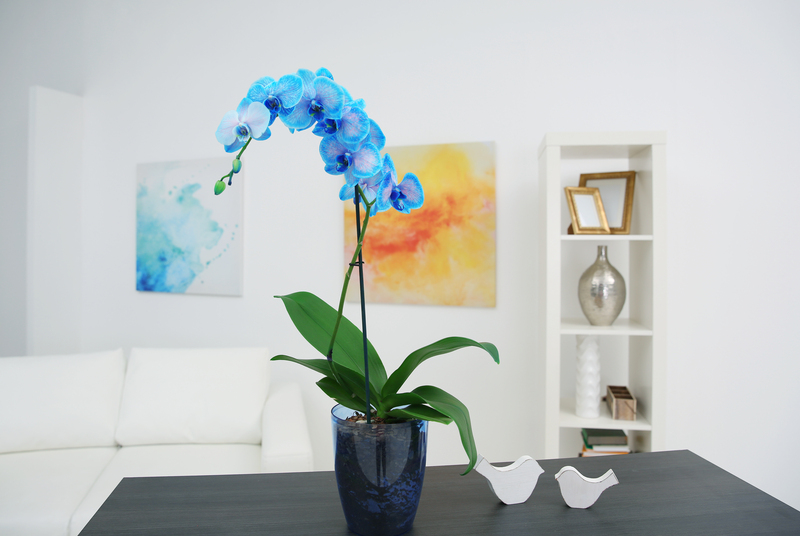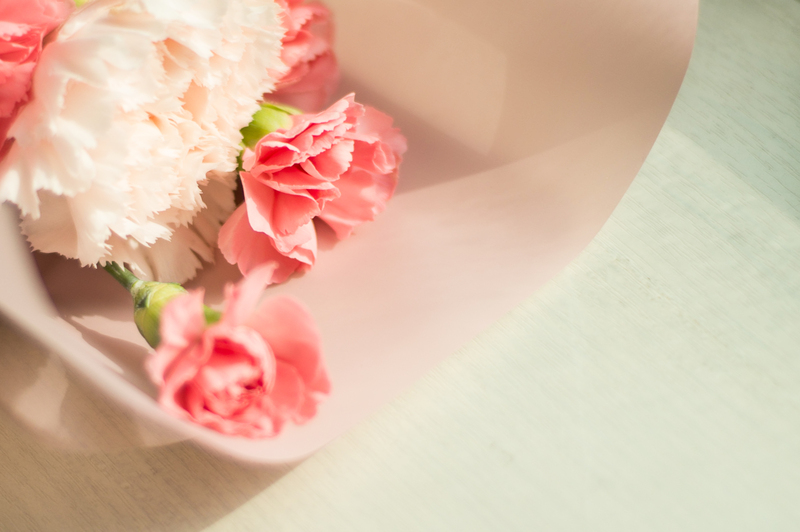Herb gardening simplified: maximize growth with minimal effort
Posted on 10/06/2025
Herb Gardening Simplified: Maximize Growth with Minimal Effort
Herb gardening is one of the most rewarding and accessible ways to dive into the world of homegrown plants. Whether you aspire to flavor your dishes with fresh basil, brew calming chamomile tea, or craft fragrant bouquets with mint and lavender, cultivating herbs at home guarantees both satisfaction and convenience. But many budding gardeners worry about the time, effort, or knowledge required. Fortunately, growing herbs doesn't need to be a chore. With a few smart strategies and the right choices, you can simplify the process and maximize your herb harvest with minimal effort.
Why Choose Herb Gardening?
- Low maintenance: Most common culinary and medicinal herbs are robust and forgiving, making them ideal for beginners.
- Compact spaces: Herbs thrive in small plots, containers, or even windowsills, perfect for any living situation.
- Fresh flavors: Home-grown herbs elevate your cooking and provide unmatched freshness.
- Health and wellness: Many herbs offer therapeutic properties, from soothing digestion to boosting immunity.
- Cost-effective: A single plant can provide far more value than repeated store-bought herb bundles.

Getting Started: The Simplest Way to Start an Herb Garden
Herb gardening simplified starts with making the right choices from the beginning. Below, we'll look at easy-to-follow steps that will help you maximize herb growth with minimal maintenance.
1. Choose Easy-to-Grow Herbs
Not all herbs are created equal. Some demand specific conditions, while others seem to grow almost anywhere. For the easiest path to a productive garden, pick low-maintenance herb varieties that thrive with little intervention:
- Basil: Fast-growing, perfect for sunlit spots.
- Mint: Thrives in both sun and partial shade; extremely prolific.
- Chives: Hardy, perennial, and resistant to most pests.
- Parsley: Resilient and versatile, grows well in pots or ground.
- Oregano: Drought-tolerant and almost effortless to maintain.
- Cilantro: Fast to germinate, ideal for container herb gardening.
- Rosemary: Needs little water once established, tolerates neglect.
Pro tip: Start with a handful of your favorite herbs; you can always expand your collection as your confidence grows.
2. Pick the Right Location
Successful herb gardening hinges on even the simplest details--like location. Most herbs crave at least six hours of sunlight per day. If outdoor space is limited, consider these alternatives:
- Windowsills: South-facing windows are best, providing ample light for potted herbs.
- Balconies or patios: Small containers thrive on apartment balconies or sunny patios.
- Raised beds: These decrease weed pressure and make maintenance easier.
For indoor herb gardens, supplemental grow lights can help during winter or in low-light conditions.
3. Simplify with Containers and Raised Beds
Containers and raised beds offer a hassle-free approach to herb gardening. They keep your herbs contained, minimize weeding, and allow for better soil control. Here's how to do it right:
- Choose containers with drainage holes (herbs hate soggy roots).
- Use quality potting mix; avoid regular garden soil.
- Group herbs with similar water and sunlight needs.
- Label your herbs for easy identification, especially as seedlings.
Container gardens can be placed indoors or outdoors--wherever you have the best sunlight!
4. Select the Right Soil
The foundation of any thriving herb garden is healthy soil. Most herbs prefer:
- Well-draining soil (to avoid root rot).
- Slightly alkaline to neutral pH (6.0 to 7.5).
- Moderate fertility--herbs don't require rich, high-nitrogen soils.
You can easily purchase quality potting blends designed for edibles or amend garden soil with compost and perlite for drainage. Avoid over-fertilizing, as excessive nutrients can reduce the flavor intensity of some herbs.
Effortless Herb Care: The Secrets to Healthy Plants
Watering Wisely
Overwatering is one of the most common mistakes in herb gardening. Here's how to keep it simple:
- Let soil dry slightly before watering again--most herbs prefer a drier environment.
- Water at the base to minimize fungal diseases and wet leaves.
- Use drip irrigation or self-watering containers for ultra-low-maintenance care.
Remember, herb gardening simplified means less is often more. Don't hover or fuss--let your plants tell you when they're thirsty.
Minimalist Feeding
Too much fertilizer leads to leggy growth and diminished flavor. Stick to these tips for minimal-effort, maximum-growth:
- Use a balanced, slow-release organic fertilizer at planting time.
- Supplement lightly with compost tea every few weeks if needed.
- Observe plants for pale leaves (sign of needing more nutrients) or lush excess growth (indicator of too much feeding).
Herbs are naturally robust and adaptable--resist the urge to over-nourish.
Smart Pruning and Harvesting
Regular harvesting--just snipping off what you need--encourages bushier growth. For maximum yield with minimal labor:
- Pinch back the tops of young herbs to promote branching.
- Avoid taking more than a third of a plant at once.
- Harvest early in the morning for best flavor.
This routine simultaneously supplies your kitchen and keeps your plants thriving--no green thumb required!
Pest and Disease Management, Simplified
Herbs tend to face fewer pest and disease problems than many garden crops, especially if you keep things simple. Follow these low-effort strategies:
- Encourage beneficial insects (like ladybugs) to reduce aphids organically.
- Inspect regularly for pests but avoid obsessing--healthy herbs usually bounce back quickly.
- Avoid overhead watering to reduce mildew risk.
- Companion planting can naturally deter pests: plant basil with tomatoes, or chives with carrots.
Pro tip: Many herbs, such as rosemary, lavender, and mint, are pest-repellent by nature, protecting neighboring plants, too.
Time-Saving Hacks for the Easiest Herb Garden
Mulch for Moisture and Weed Control
Use a layer of organic mulch (like straw or bark chips) around your herbs. This simple step:
- Retains moisture in the soil (fewer waterings needed).
- Keeps weeds at bay (less weeding for you).
- Provides a neat, tidy look to your garden.
Companion Planting for Effortless Success
Some herb combinations naturally boost growth and minimize problems. Try these classic pairings for simplified care:
- Basil and tomatoes: Basil deters pests and enhances tomato flavor.
- Chives and carrots: Chives repel carrot flies.
- Mint and cabbage: Mint discourages cabbage moths (keep mint in pots to contain it).
Automatic Watering
Install a low-cost drip irrigation or use self-watering planters for hands-off watering. Set it up once, and your herbs will thrive even on busy days or vacations.
Opt for Perennial Herbs
Annual herbs need replanting each year, but perennial varieties (like rosemary, thyme, oregano, and chives) come back season after season with minimal care. Just trim them down each spring, and enjoy fresh herbs for years.
Best Practices: Troubleshooting Common Issues
Even with the most simplified herb gardening approach, you may encounter occasional hitches. Here's how to handle them quickly and easily:
Sparse or Weak Growth
- Check for adequate sunlight; move containers if necessary.
- Ensure good drainage; soggy roots limit growth.
- Trim leggy stems to promote bushiness.
Yellowing Leaves
- This often signals overwatering. Allow soil to dry out slightly.
- If in containers, make sure drainage holes aren't blocked.
- Rarely, yellowing may be a nutrient issue; feed lightly if all other conditions are correct.
Pest Infestations
- Wash aphids or spider mites gently with a soft soap solution.
- Encourage natural predators by avoiding broad-spectrum pesticides.
- Remove and compost severely affected leaves to protect the rest of the plant.

Herb Gardening Simplified: Maximizing Your Harvest with Minimal Work
As you can see, herb gardening made easy is about smart planning rather than hard labor. With a small up-front investment in time and thought--choosing the right herbs, providing good soil and sunlight, and setting up containers or beds--you'll enjoy vibrant, healthy herbs with little ongoing effort.
- Stick with robust, beginner-friendly varieties for maximum success.
- Use containers or raised beds for superior convenience and control.
- Keep watering, feeding, and pruning straightforward and moderate.
- Troubleshoot problems quickly with simple, natural solutions.
- Enjoy a steady supply of fresh culinary and medicinal herbs at your fingertips--all year long!
Ready to start your easy herb garden? There's no better time than now! With these herb gardening simplified strategies, you'll maximize growth and flavor with minimal time, fuss, or expense. Happy growing!
Frequently Asked Questions & Quick Answers (Herb Gardening Simplified)
-
What are the easiest herbs to grow indoors?
Basil, chives, mint, oregano, and parsley all flourish indoors with adequate light. -
How often should I water my herb garden?
Only when the top inch of soil feels dry. Most herbs prefer slightly dry over too moist. -
Can I grow herbs year-round?
Yes! Indoors with a sunny window or grow light, herbs can thrive year-round. -
Are there herbs that repel pests?
Mint, rosemary, lavender, and basil have natural pest-repelling properties--making your garden healthier and more resilient.
Discover the joy and simplicity of herb gardening. Maximize growth, minimize effort, and enjoy abundant, aromatic harvests every season!

